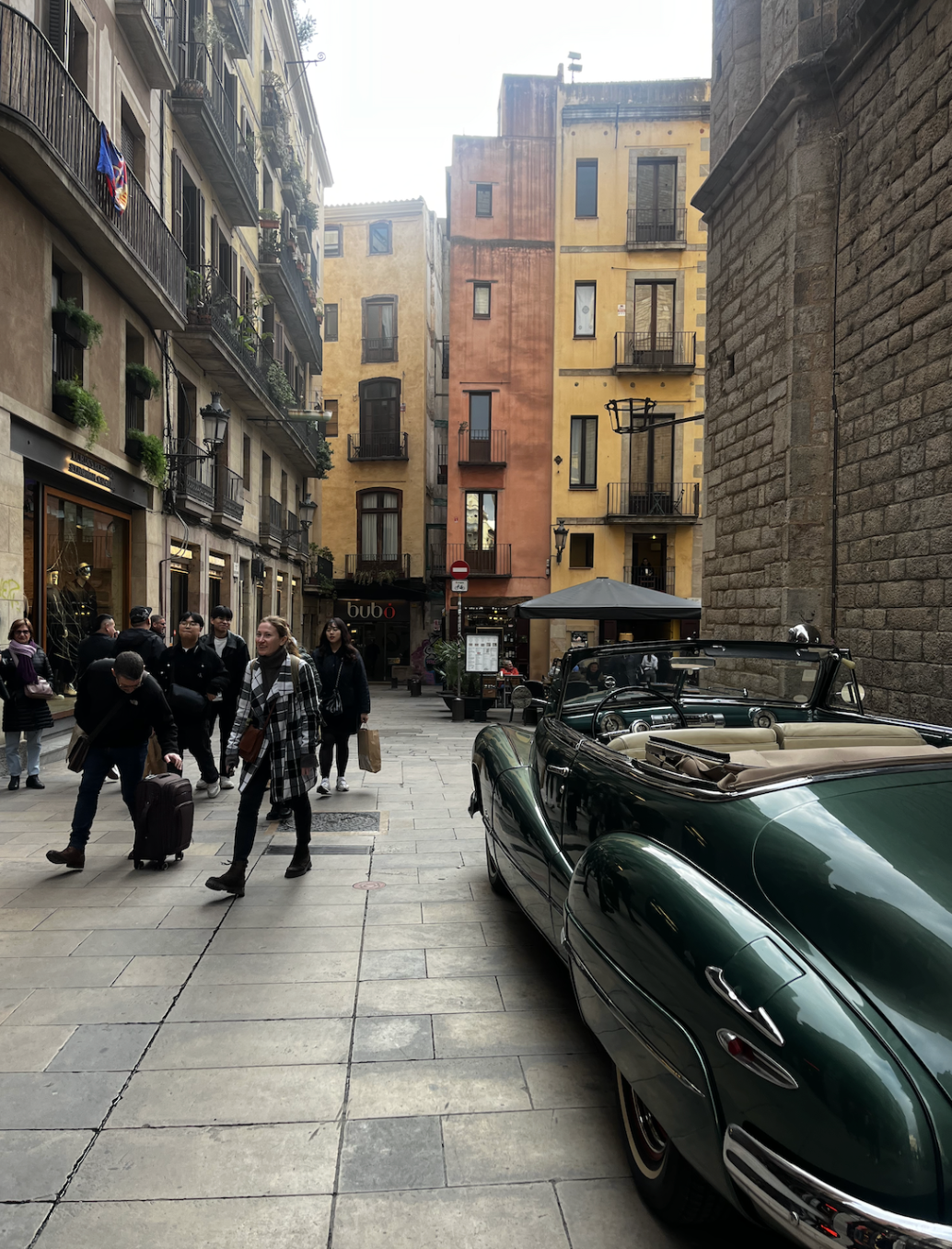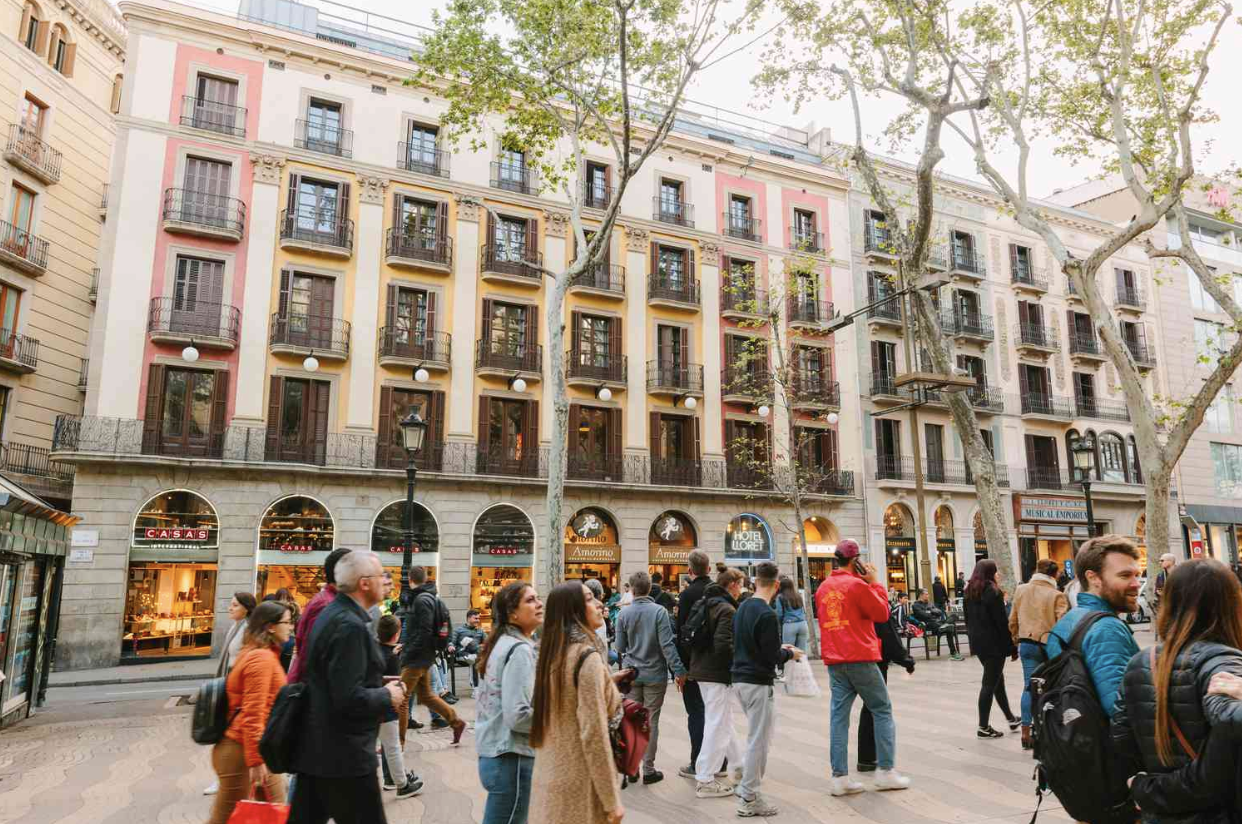Traveling Trends: Abroad Journals
Written by Mia Quigley
Some people enjoy people-watching, others enjoy bird-watching – personally, I enjoy outfit-watching. Growing up in Chicago, I’ve been immersed in a diverse setting of people that created an environment for me to constantly observe the unique outfits and styles of those around me. After my first month studying abroad in Barcelona, I’ve found myself spending most of my days analyzing and admiring the outfits of others. In doing so, I’ve made many interesting comparisons to my accustomed American style to which I curated into a list of my most notable observations. Throughout the semester, I’ll continue to track my observations from various locations to create a journal of the unspoken details of fashion around the world. Additionally, this will act as a guide for future abroad students to references for their future endeavors.
LOCATION 1: BARCELONA, SPAIN
The bustling streets of Barcelona flood with multilingual conversations, blissful music from street performers, and siblings squabbling in nearby plazas. The lively actions of city-dwellers represent the Spanish way of life: enjoying life's pleasures and appreciating the people and places surrounding it. “Siestaing” in the middle of each day, shops being closed on Sundays, and servers at restaurants addressing tables solely upon request are other common reflections of this easy-going way of life. The style of the residents closely reflect these norms, emphasizing comfort and practicality, yet still maintaining presentability.
Barcelona is located in Catalonia, a region of northeastern Spain. Catalans are known for their hard-working, liberated personalities, which is presented clearly through their conservatively-dressed appearances. When glancing around the colorful streets, it is almost impossible to see anyone in baggy loungewear, like pajama pants or oversized hoodies. To better understand the essentials of Catalan and Spanish style, I have split up the everyday attire into categories to exhibit their underlying differences compared to American style.
TOPS
Tops are the pieces that I found to have the most overlapping similarities. From tees, to sweaters, to jackets, there is not one recurring trend that is most prevalent. Since it is currently winter here (even though it's 50 degrees), people are dressed in long-sleeve tops, cardigans, and sweaters of all sorts. The most popular everyday look tends to consist of a long-sleeve shirt or sweater accompanied by an open jacket or blazer. Tops are usually solid colors, with minimal patterns or logos; style here is generally very minimalistic.
One of the most surprising observations I’ve found is that the “abroad trench coats”, which many Americans wear, are not a common item amongst the locals; in fact, they are actually quite rare. Instead, many dress in typical light-weight winter coats, leather jackets, blazers, and the occasional fur coat. As the style here is largely business-casual, the day-time outfits are modest and composed, unlike many beloved American items such as hoodies, low-cut tops and crop-tops. So, when planning a visit to Barcelona, it is probably best to leave the Brandy Melville zip-ups and Lululemon scubas at home.
BOTTOMS
Pants are much more limited in variety than tops. The one key takeaway I’ve gathered is ripped jeans are not a thing here. No matter the style or material, there is likely 1 in 100 people wearing pants with rips. This comes as no surprise, due to the style expectations discussed previously. In regards to these expectations, I was also shocked to see that the baggy jeans trend is so prevalent here. Most women dress in baggy jeans, flowy trousers, or wide-leg dress pants, to incorporate comfort into their business-casual looks.
Athletic wear however, it is the opposite. There are no yoga pants or flare sweatpants, but instead the normal athletic leggings that Americans have recently strayed away from. Another big takeaway I found is that men do not wear khakis (truthfully not one person). Men instead wear jeans–with no rips–or solid color trousers, often black, blue, or gray. As we all love our comfy loungewear, dressing leisurely here means athletic wear, such as leggings or sports joggers for men, not sweatpants or yoga pants.
SHOES
Barcelona is a massive city known for its walking accessibility and public transportation. This means the number one priority for shoes is comfort, not style. As us Americans are familiar with the ever-changing shoe trends, e.g. Nike dunks, New Balance 550’s, and Adidas sambas, it is incredible to see such a wide variety of different shoe brands and styles. When observing shoes on the Metro or the streets, I was amazed that I rarely found repeats in the shoes of those around me.
Recently, I learned that Barcelona is known for textiles and handmade goods, particularly their quality leather. So, in place of department stores that sell big-name brands, they have small boutiques, vintage stores, and local chains that sell products from local vendors and designers. Leather dress shoes and boots seem to be the most popular shoe, along with non-branded tennis shoes for those looking for a more comfortable option. For nightlife, American girls are known to wear the classic knee-high black boots, but the locals do not. Instead, they wear short leather boots (similar to Doc Martens) made by local producers, which can be dressed down during the day with jeans or dressed up at night with tights.
ACCESSORIES
Pick-pocketing is unfortunately a frequent occurrence in Barcelona, causing people to be very cautious when it comes to accessories. In America, we are used to stacks of jewelry, designer bags and a variety of hats. In Barcelona it is just the opposite because wearing blingy jewelry and designer items can make you an easy target for pickpocketers. I’ve noticed that women tend to wear one pair of statement earrings and limit themselves to one or two rings or bracelets. Bags consist of crossbody handbags, tote bags and briefcases for men, none of which have big logos or monograms. As for hats, we are used to baseball caps and beanies, yet these are never seen; in fact, it is rare to see hats at all in Barcelona. Overall, accessories here are accurate reflections of the minimalistic preferences of Spanish culture.
Moving from Chicago to Barcelona, both large metropolitan areas, I was expecting to see a lot more similarities than differences within fashion. However, Barcelona is not a “fashion-hub,” despite its wide diversity of looks. From my observations collected thus far, I've come to realize that style does not need to revolve around trends or brands. In a city with such appreciation for its culture and design, it has been enlightening to notice people prioritizing their demeanor and customs rather than materialistic items. In America, we are absorbed by the constant integration of social media trends, creating a uniformed society that makes it difficult to be unique and express one’s personal ethics. Oppositely, living here in a society with minimal trends, it is clear that this is how individuality thrives. As the first city in my Travel Trends journal, Barcelona provided a contrary perspective that has expanded my viewpoint of fashion around the world.
Edited by Nicole Borras, Helen Song, Sam Teisch, and Annie Stockwell.







